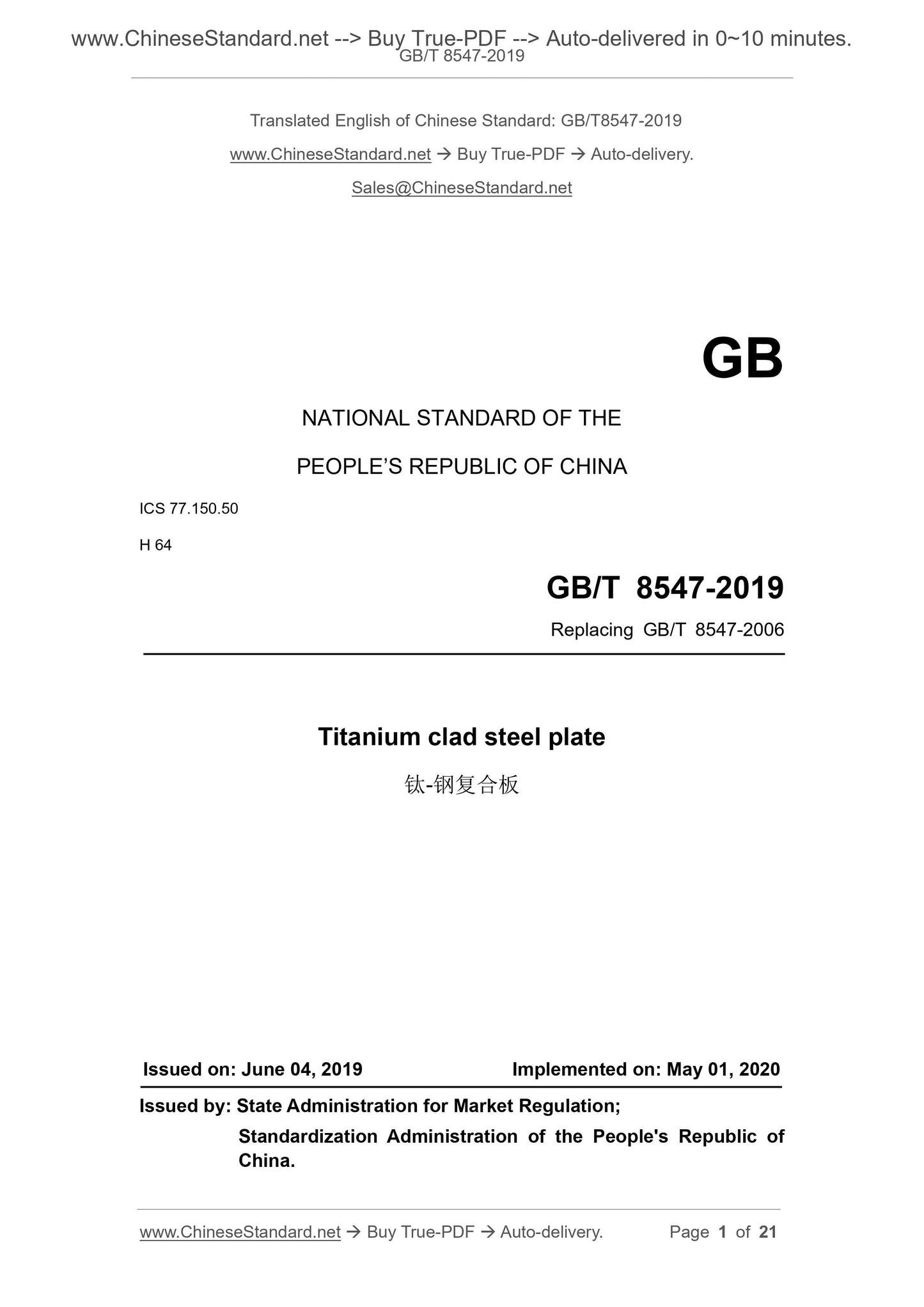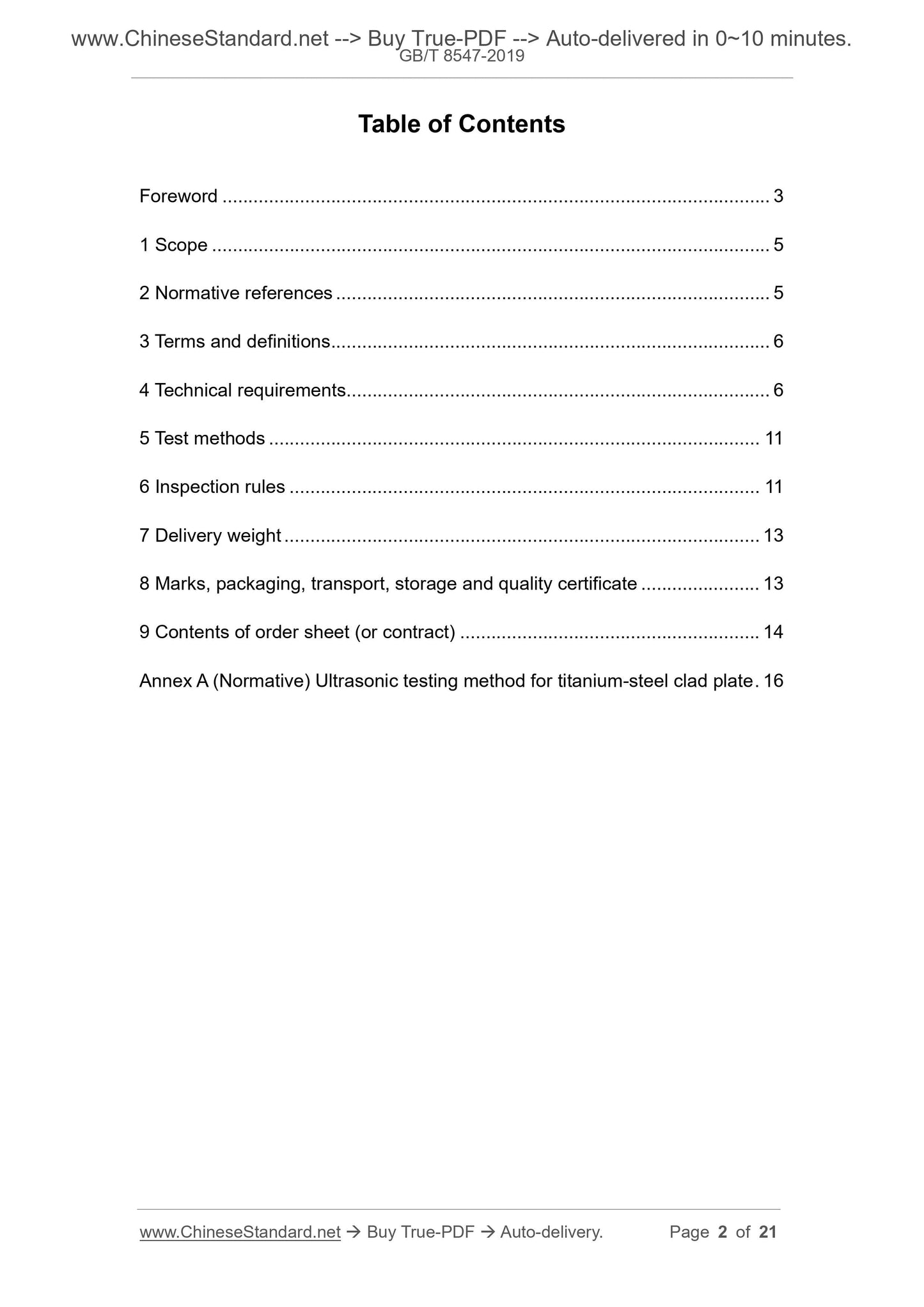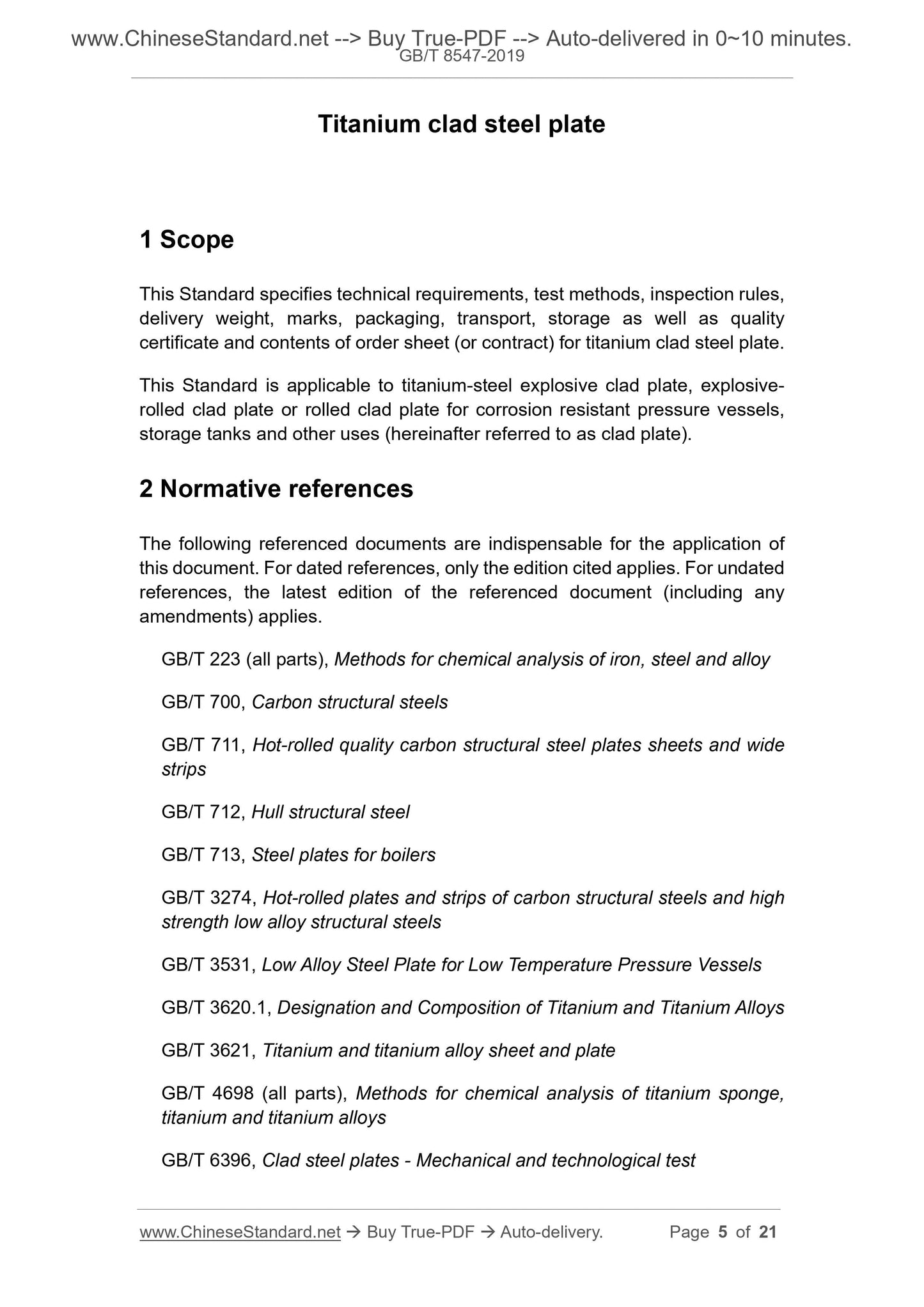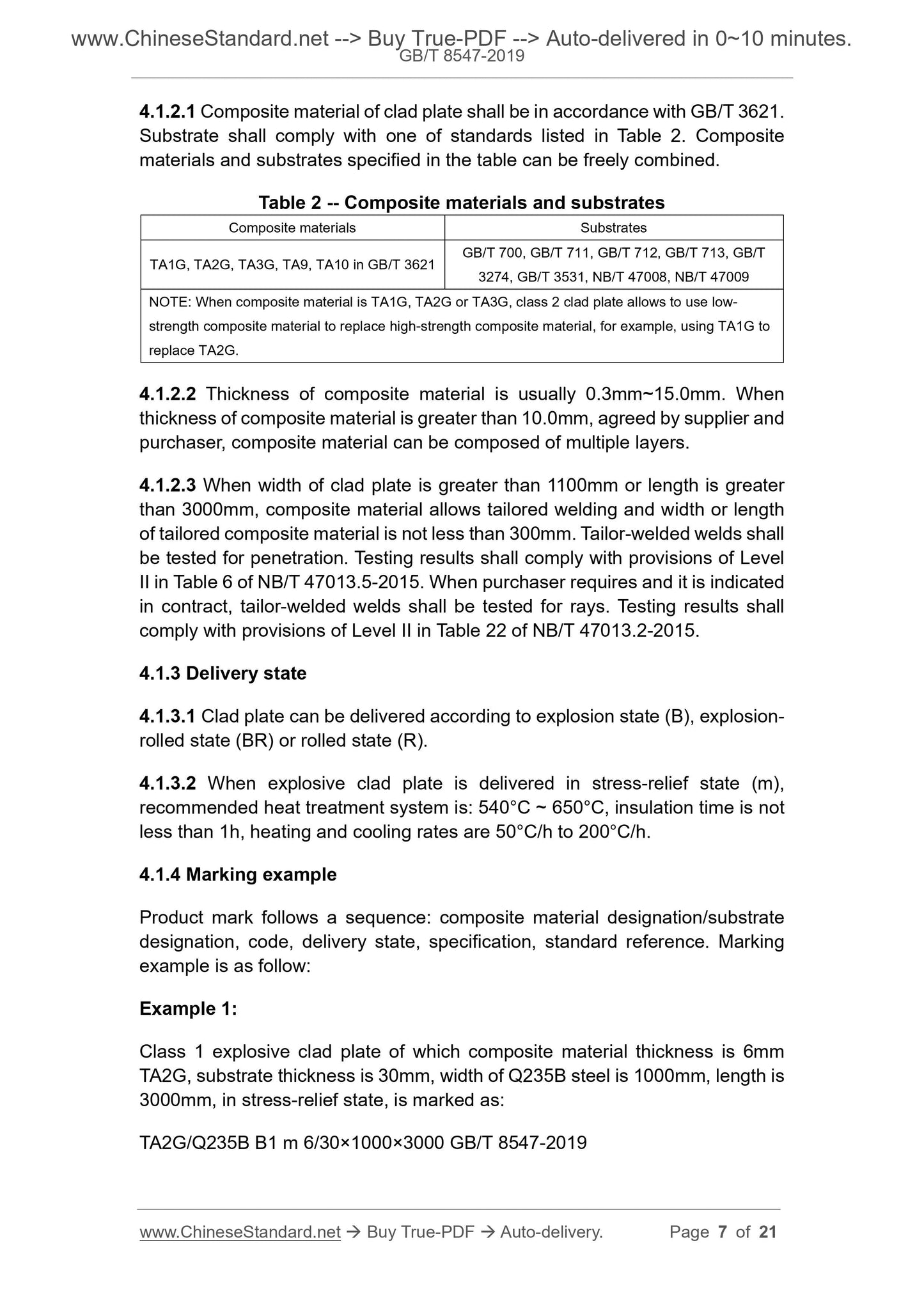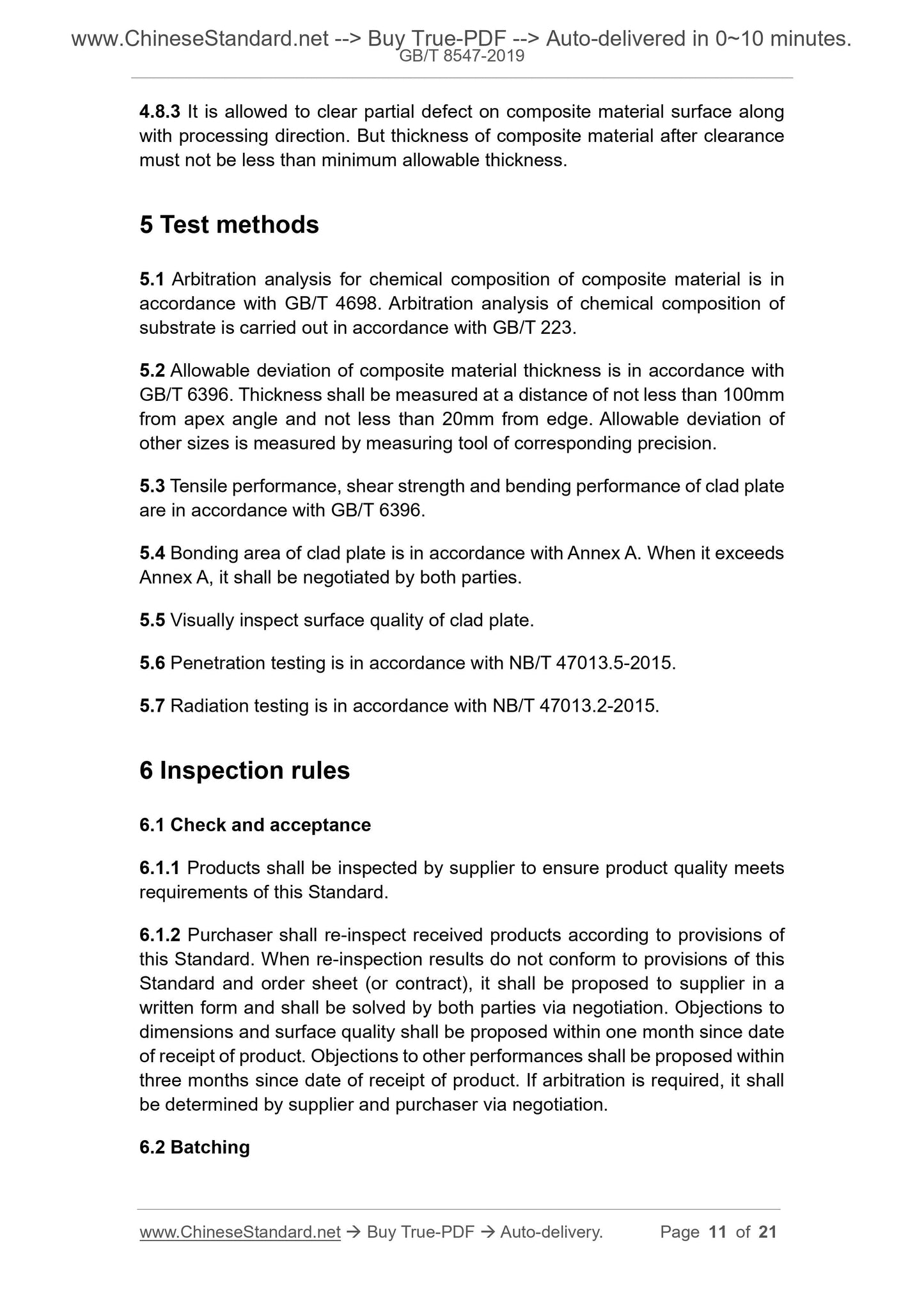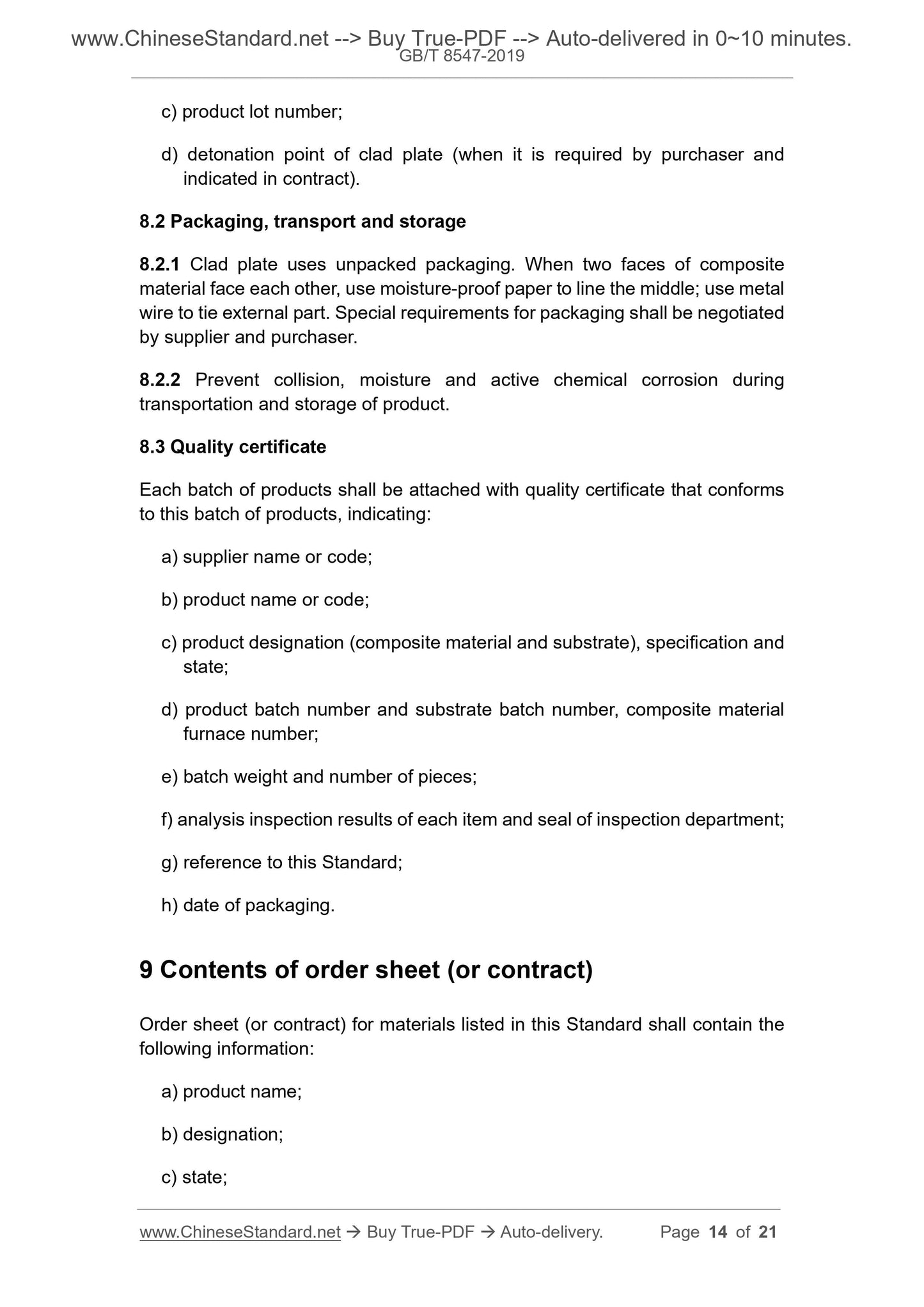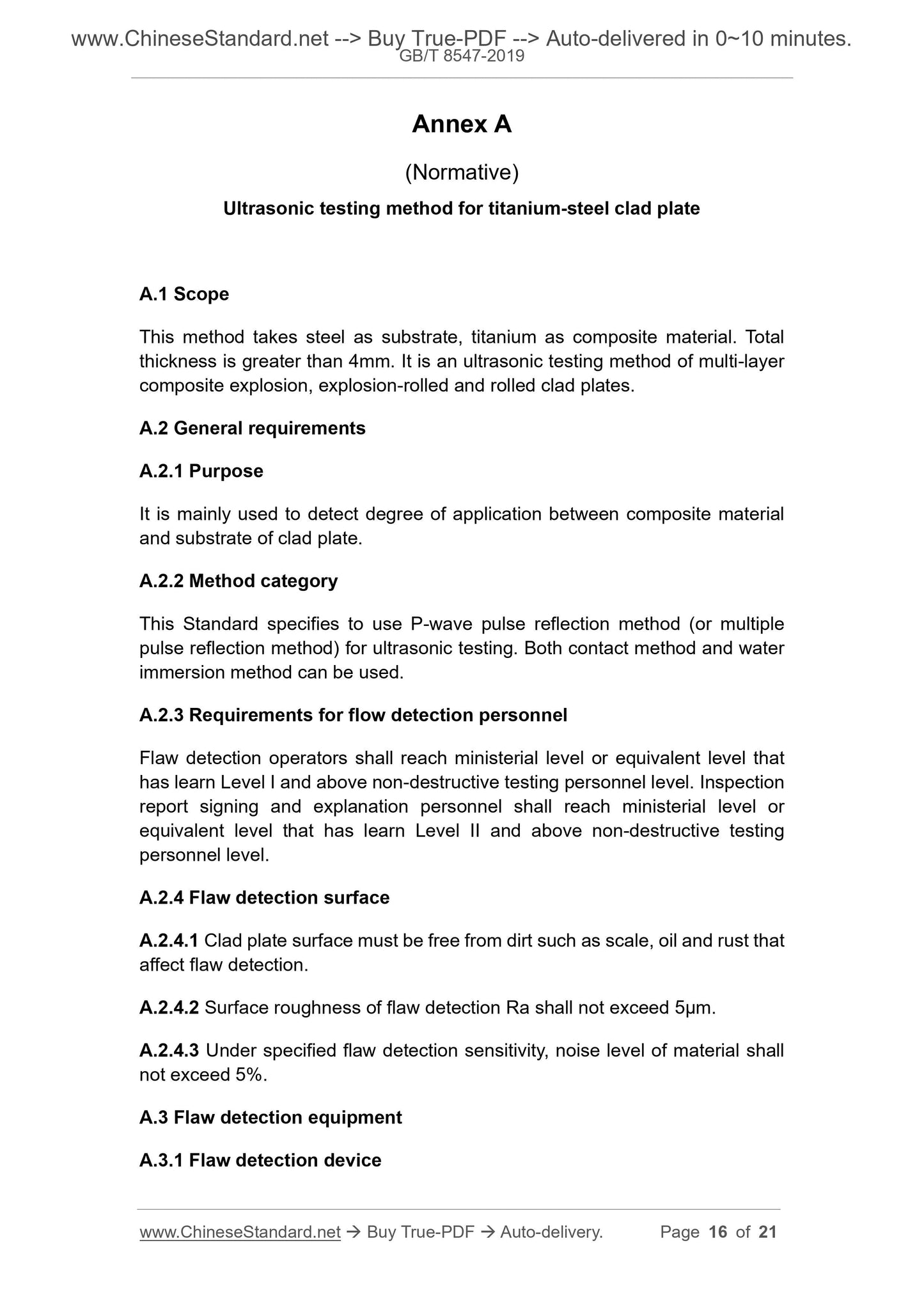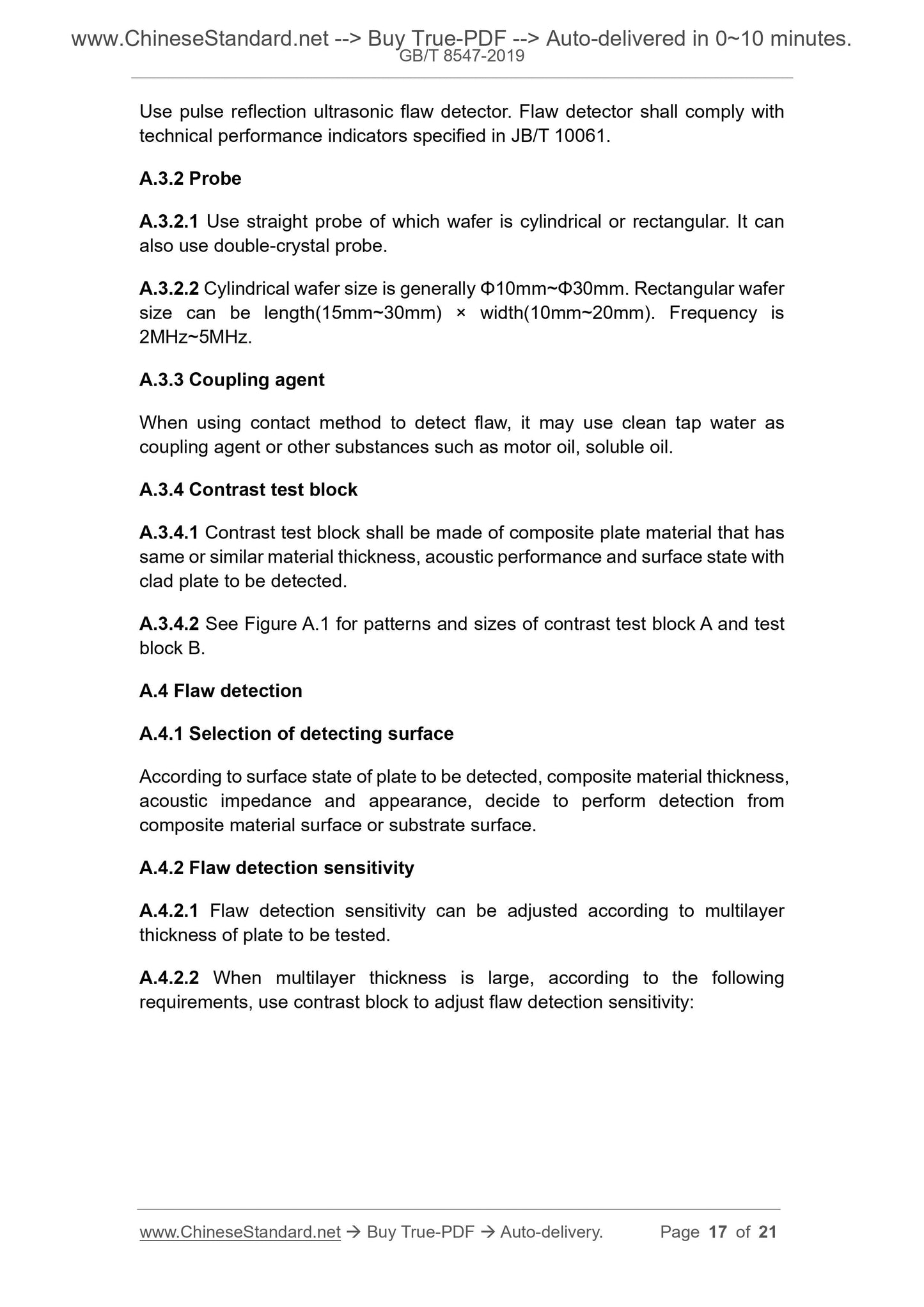1
/
of
8
www.ChineseStandard.us -- Field Test Asia Pte. Ltd.
GB/T 8547-2019 English PDF (GB/T8547-2019)
GB/T 8547-2019 English PDF (GB/T8547-2019)
Regular price
$150.00
Regular price
Sale price
$150.00
Unit price
/
per
Shipping calculated at checkout.
Couldn't load pickup availability
GB/T 8547-2019: Titanium clad steel plate
Delivery: 9 seconds. Download (and Email) true-PDF + Invoice.Get Quotation: Click GB/T 8547-2019 (Self-service in 1-minute)
Newer / historical versions: GB/T 8547-2019
Preview True-PDF
Scope
This Standard specifies technical requirements, test methods, inspection rules,delivery weight, marks, packaging, transport, storage as well as quality
certificate and contents of order sheet (or contract) for titanium clad steel plate.
This Standard is applicable to titanium-steel explosive clad plate, explosive-
rolled clad plate or rolled clad plate for corrosion resistant pressure vessels,
storage tanks and other uses (hereinafter referred to as clad plate).
Basic Data
| Standard ID | GB/T 8547-2019 (GB/T8547-2019) |
| Description (Translated English) | Titanium clad steel plate |
| Sector / Industry | National Standard (Recommended) |
| Classification of Chinese Standard | H64 |
| Classification of International Standard | 77.150.50 |
| Word Count Estimation | 14,171 |
| Date of Issue | 2019-06-04 |
| Date of Implementation | 2020-05-01 |
| Issuing agency(ies) | State Administration for Market Regulation, China National Standardization Administration |
Share
